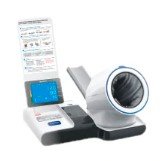Understanding the Impact of Pama on Phlebotomy Reimbursement Rates
Summary
- The implementation of the Protecting Access to Medicare Act (PAMA) in 2014 has significantly impacted phlebotomy Reimbursement rates in the United States.
- Changes in the Clinical Laboratory Fee Schedule (CLFS) under PAMA have introduced payment reductions that have affected medical labs and phlebotomists
- The ongoing modifications to Medicare policies continue to influence phlebotomy Reimbursement rates, requiring medical professionals to stay informed and adapt to these changes.
Introduction
Phlebotomy is a crucial aspect of healthcare, involving the collection and transportation of blood samples for diagnostic testing. Phlebotomists play a vital role in the healthcare system, and their services are essential for accurate patient diagnosis and treatment. In the United States, Medicare policy changes have had a significant impact on phlebotomy Reimbursement rates, leading to fluctuations that affect medical labs and Healthcare Providers.
Protecting Access to Medicare Act (PAMA)
The Protecting Access to Medicare Act (PAMA) was enacted by Congress in 2014 to address various issues related to Medicare Reimbursement rates, including those for clinical laboratory services such as phlebotomy. PAMA introduced reforms to the Clinical Laboratory Fee Schedule (CLFS), which determines payment rates for lab tests covered by Medicare.
- Under PAMA, the Centers for Medicare & Medicaid Services (CMS) began using private payor rates to calculate Medicare payment rates for lab tests, aiming to align Reimbursement rates with market prices.
- This change resulted in significant payment reductions for many lab tests, including those performed by phlebotomists, impacting the revenue of medical labs and Healthcare Providers.
Impact on Phlebotomy Reimbursement Rates
The implementation of PAMA and the changes to the CLFS have led to fluctuations in phlebotomy Reimbursement rates across the United States. These fluctuations can have various consequences for medical labs, phlebotomists, and healthcare organizations:
- Financial Challenges: The reduction in Reimbursement rates for phlebotomy services can create financial challenges for medical labs, as it affects their revenue and profitability. Healthcare Providers may need to adjust their operations and budgets to compensate for these changes.
- Quality of Care: Fluctuations in Reimbursement rates can impact the quality of phlebotomy services provided to patients. Healthcare organizations may need to streamline their processes and resources to maintain high standards of care despite the financial constraints.
- Workforce Impact: Changes in Reimbursement rates can also affect the job market for phlebotomists, influencing employment opportunities and career prospects in the field. Professionals may need to adapt to the evolving Reimbursement landscape to secure stable employment and career growth.
Ongoing Modifications and Adaptation
As Medicare policies continue to evolve, it is essential for medical labs, phlebotomists, and Healthcare Providers to stay informed and adapt to changes in Reimbursement rates:
- Monitoring Policy Updates: Healthcare organizations should monitor updates to Medicare policies and Regulations that may impact phlebotomy Reimbursement rates. Staying informed can help them anticipate changes and adjust their practices accordingly.
- Adapting Billing Practices: Medical labs and phlebotomists may need to review and adapt their billing practices to optimize Reimbursement rates and navigate the complexities of Medicare policies. Proper documentation and coding can ensure accurate payments for services rendered.
- Educating Staff: It is crucial to educate staff members, including phlebotomists and administrative personnel, about changes in Medicare policy and Reimbursement rates. Training programs and resources can help them understand the implications of these changes and comply with billing requirements.
Conclusion
Fluctuations in phlebotomy Reimbursement rates in the United States are primarily driven by changes in Medicare policy, such as the implementation of PAMA and modifications to the Clinical Laboratory Fee Schedule. These policy shifts have financial, operational, and workforce implications for medical labs, phlebotomists, and Healthcare Providers. By staying informed, adapting to policy changes, and optimizing billing practices, stakeholders in the healthcare industry can navigate these fluctuations and continue to deliver high-quality phlebotomy services to patients.

Disclaimer: The content provided on this blog is for informational purposes only, reflecting the personal opinions and insights of the author(s) on the topics. The information provided should not be used for diagnosing or treating a health problem or disease, and those seeking personal medical advice should consult with a licensed physician. Always seek the advice of your doctor or other qualified health provider regarding a medical condition. Never disregard professional medical advice or delay in seeking it because of something you have read on this website. If you think you may have a medical emergency, call 911 or go to the nearest emergency room immediately. No physician-patient relationship is created by this web site or its use. No contributors to this web site make any representations, express or implied, with respect to the information provided herein or to its use. While we strive to share accurate and up-to-date information, we cannot guarantee the completeness, reliability, or accuracy of the content. The blog may also include links to external websites and resources for the convenience of our readers. Please note that linking to other sites does not imply endorsement of their content, practices, or services by us. Readers should use their discretion and judgment while exploring any external links and resources mentioned on this blog.
